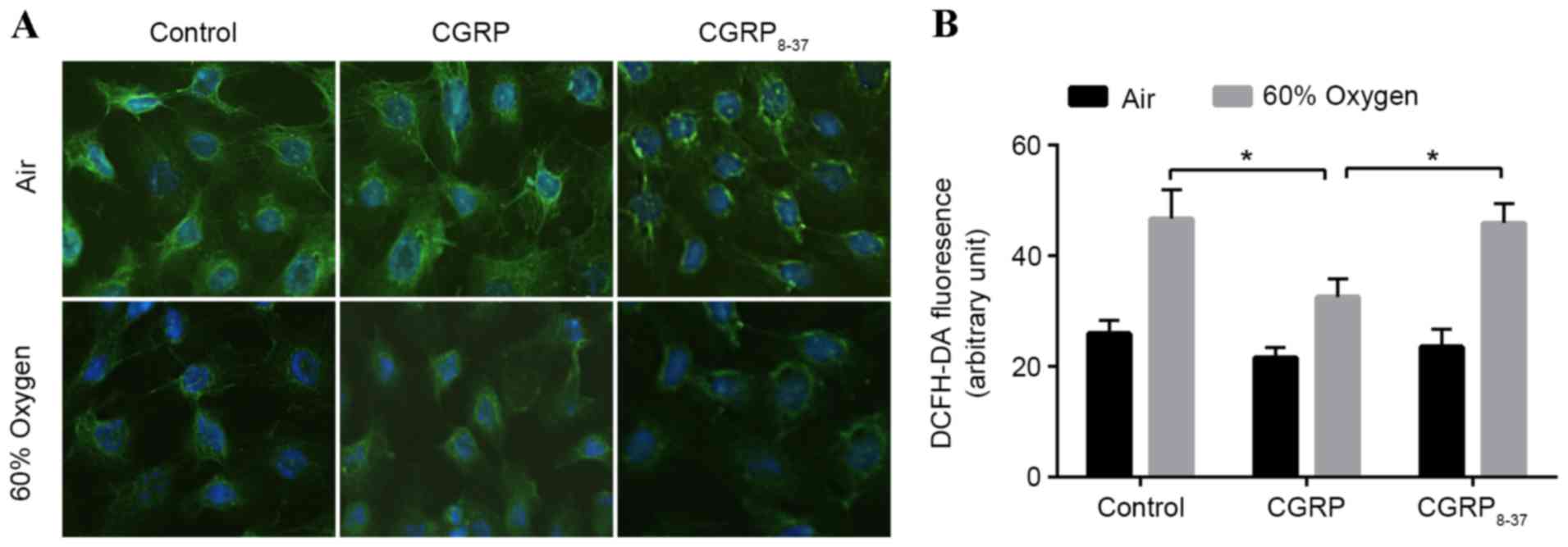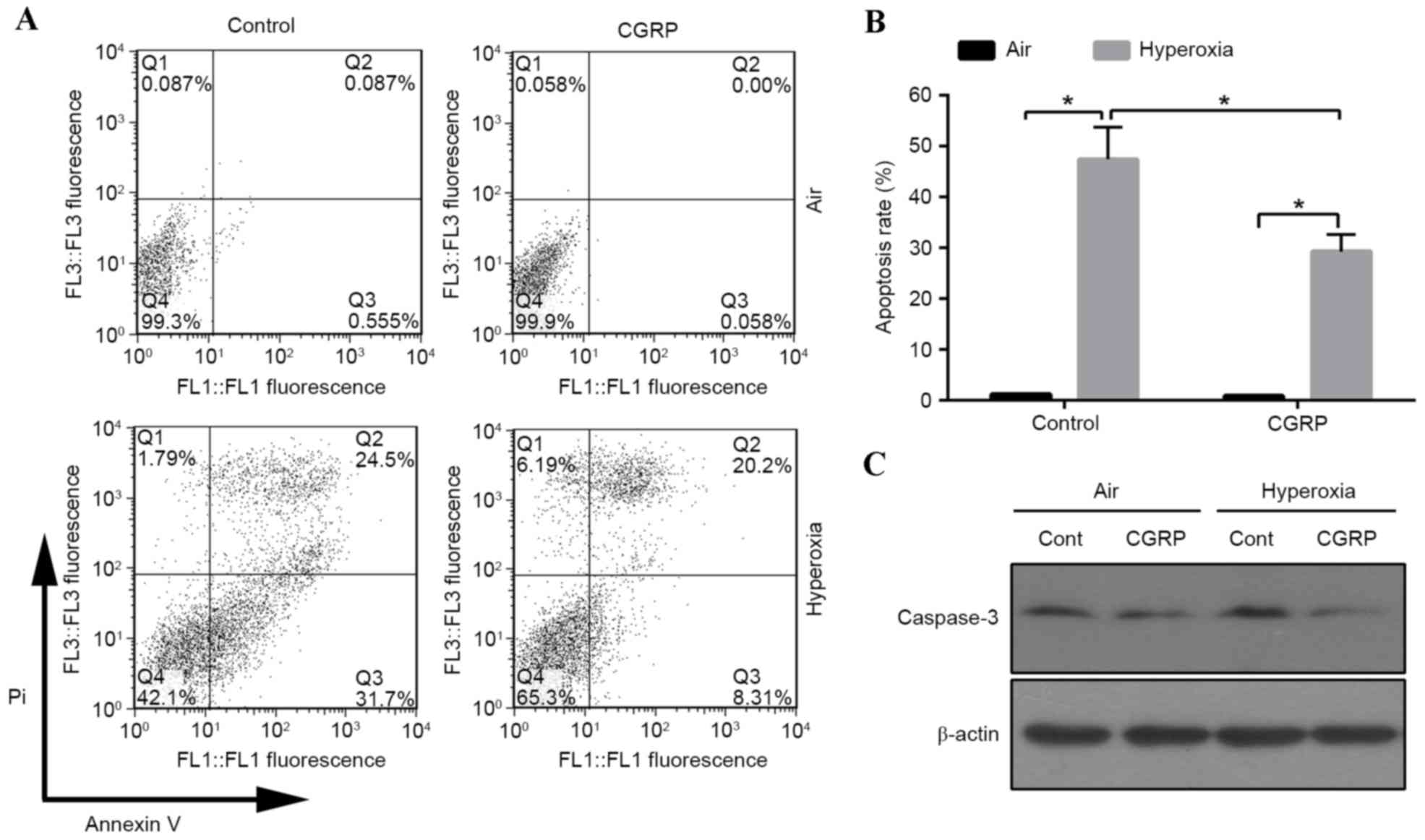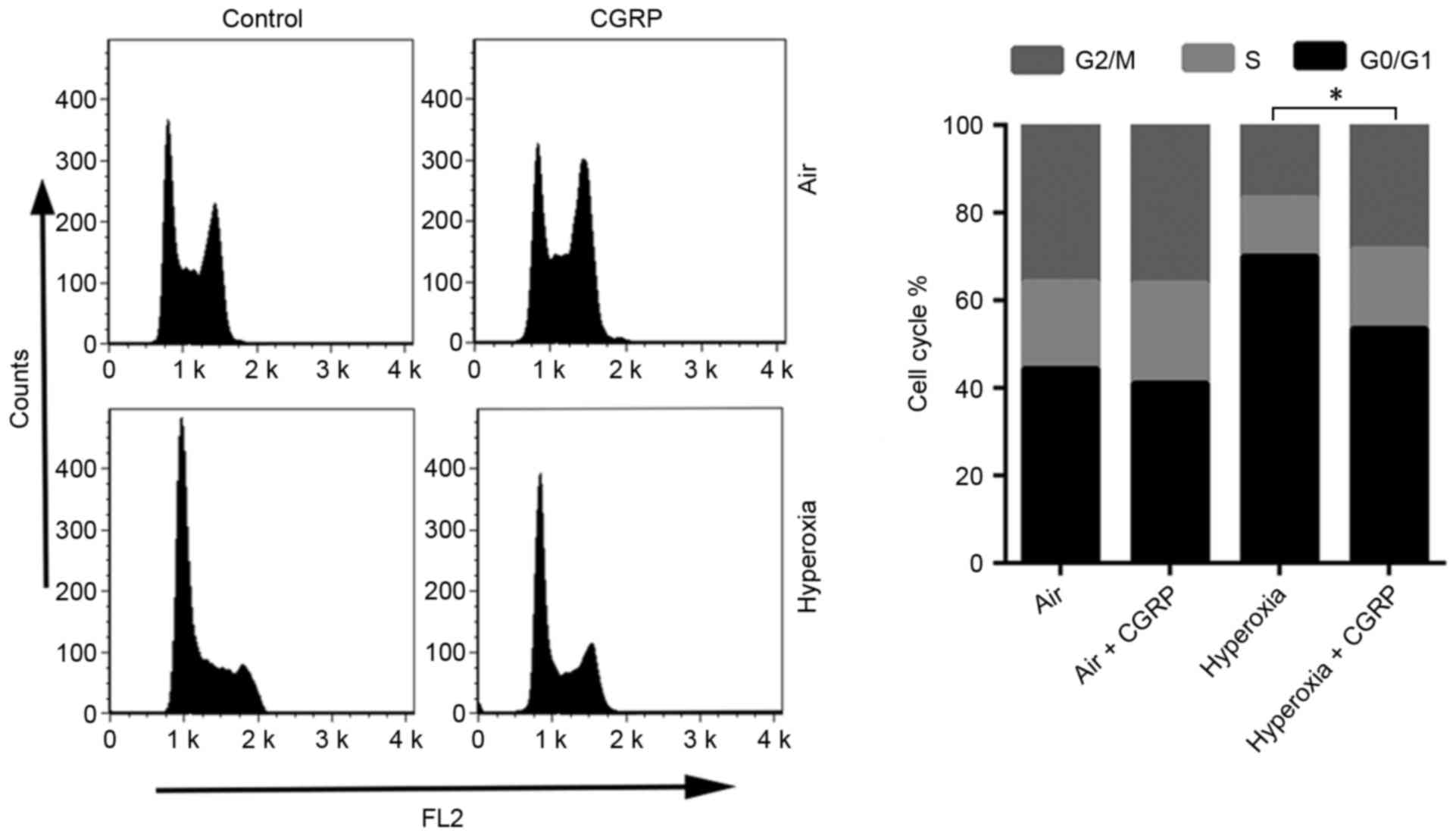|
1
|
Kallet RH and Matthay MA: Hyperoxic acute
lung injury. Respir Care. 58:123–141. 2013. View Article : Google Scholar : PubMed/NCBI
|
|
2
|
Bellani G, Laffey JG, Pham T, Fan E,
Brochard L, Esteban A, Gattinoni L, van Haren F, Larsson A, McAuley
DF, et al: Epidemiology, patterns of care, and mortality for
patients with acute respiratory distress syndrome in intensive care
units in 50 Countries. JAMA. 315:788–800. 2016. View Article : Google Scholar : PubMed/NCBI
|
|
3
|
Singh G, Gladdy G, Chandy TT and Sen N:
Incidence and outcome of acute lung injury and acute respiratory
distress syndrome in the surgical intensive care unit. Indian J
Crit Care Med. 18:659–665. 2014. View Article : Google Scholar : PubMed/NCBI
|
|
4
|
Ward NS, Waxman AB, Homer RJ, Mantell LL,
Einarsson O, Du Y and Elias JA: Interleukin-6-induced protection in
hyperoxic acute lung injury. Am J Respir Cell Mol Biol. 22:535–542.
2000. View Article : Google Scholar : PubMed/NCBI
|
|
5
|
Fukumoto J, Fukumoto I, Parthasarathy PT,
Cox R, Huynh B, Ramanathan GK, Venugopal RB, Allen-Gipson DS,
Lockey RF and Kolliputi N: NLRP3 deletion protects from
hyperoxia-induced acute lung injury. Am J Physiol Cell Physio.
305:C182–C189. 2013. View Article : Google Scholar
|
|
6
|
Crapo JD: Morphologic changes in pulmonary
oxygen toxicity. Annu Rev Physiol. 48:721–731. 1986. View Article : Google Scholar : PubMed/NCBI
|
|
7
|
Durr RA, Dubaybo BA and Thet LA: Repair of
chronic hyperoxic lung injury: Changes in lung ultrastructure and
matrix. Exp Mol Pathol. 47:219–240. 1987. View Article : Google Scholar : PubMed/NCBI
|
|
8
|
Wang Y, Feinstein SI, Manevich Y, Ho YS
and Fisher AB: Lung injury and mortality with hyperoxia are
increased in peroxiredoxin 6 gene-targeted mice. Free Radic Biol
Med. 37:1736–1743. 2004. View Article : Google Scholar : PubMed/NCBI
|
|
9
|
Warner BB, Stuart LA, Papes RA and Wispe
JR: Functional and pathological effects of prolonged hyperoxia in
neonatal mice. Am J Physiol. 275:L110–L117. 1998.PubMed/NCBI
|
|
10
|
Russo AF: Calcitonin gene-related peptide
(CGRP): A new target for migraine. Annu Rev Pharmacol Toxicol.
55:533–552. 2015. View Article : Google Scholar : PubMed/NCBI
|
|
11
|
Li WJ and Wang TK: Calcitonin gene-related
peptide inhibits interleukin-1beta-induced interleukin-8 secretion
in human type II alveolar epithelial cells. Acta Pharmacol Sin.
27:1340–1345. 2006. View Article : Google Scholar : PubMed/NCBI
|
|
12
|
Filomeni G, De Zio D and Cecconi F:
Oxidative stress and autophagy: The clash between damage and
metabolic needs. Cell Death Differ. 22:377–388. 2015. View Article : Google Scholar : PubMed/NCBI
|
|
13
|
Bennett MR: Reactive oxygen species and
death: Oxidative DNA damage in atherosclerosis. Cir Res.
88:648–650. 2001. View Article : Google Scholar
|
|
14
|
Kim SJ, Cheresh P, Williams D, Cheng Y,
Ridge K, Schumacker PT, Weitzman S, Bohr VA and Kamp DW:
Mitochondria-targeted Ogg1 and aconitase-2 prevent oxidant-induced
mitochondrial DNA damage in alveolar epithelial cells. J Biol Chem.
289:6165–6176. 2014. View Article : Google Scholar : PubMed/NCBI
|
|
15
|
Shao L, Perez RE, Gerthoffer WT, Truog WE
and Xu D: Heat shock protein 27 protects lung epithelial cells from
hyperoxia-induced apoptotic cell death. Pediatr Res. 65:328–333.
2009. View Article : Google Scholar : PubMed/NCBI
|
|
16
|
Li Y, Teruya K, Katakura Y, Kabayama S,
Otsubo K, Morisawa S, Ishii Y, Gadek Z and Shirahata S: Effect of
Reduced Water on the Apoptotic Cell Death Triggered by Oxidative
Stress in Pancreatic β HIT-T15 Cell. In: Animal cell technology
meets Genomics. Springer. 2:pp121–124. 2005.
|
|
17
|
Thome UH, Davis IC, Nguyen SV, Shelton BJ
and Matalon S: Modulation of sodium transport in fetal alveolar
epithelial cells by oxygen and corticosterone. Am J Physiol Lung
Cell Mol Physiol. 284:L376–L385. 2003. View Article : Google Scholar : PubMed/NCBI
|
|
18
|
Li Z, Fang F and Xu F: Effects of
different states of oxidative stress on fetal rat alveolar type II
epithelial cells in vitro and ROSinduced changes in Wnt signaling
pathway expression. Mol Med Rep. 7:1528–1532. 2013.PubMed/NCBI
|
|
19
|
Li F, He J, Wei J, Cho WC and Liu X:
Diversity of epithelial stem cell types in adult lung. Stem Cells
Int. 2015:7283072015. View Article : Google Scholar : PubMed/NCBI
|
|
20
|
De Paepe ME, Mao Q, Chao Y, Powell JL,
Rubin LP and Sharma S: Hyperoxia-induced apoptosis and Fas/FasL
expression in lung epithelial cells. Am J Physiol Lung Cell Mol
Physiol. 289:L647–L659. 2005. View Article : Google Scholar : PubMed/NCBI
|
|
21
|
Kidane D, Chae WJ, Czochor J, Eckert KA,
Glazer PM, Bothwell AL and Sweasy JB: Interplay between DNA repair
and inflammation and the link to cancer. Crit Rev Biochem Mol Biol.
49:116–139. 2014. View Article : Google Scholar : PubMed/NCBI
|
|
22
|
Branzei D and Foiani M: Regulation of DNA
repair throughout the cell cycle. Nat Rev Mol Cell Biol. 9:297–308.
2008. View
Article : Google Scholar : PubMed/NCBI
|
|
23
|
Jankov RP, Luo X, Campbell A, Belcastro R,
Cabacungan J, Johnstone L, Frndova H, Lye SJ and Tanswell AK:
Fibroblast growth factor receptor-1 and neonatal compensatory lung
growth after exposure to 95% oxygen. Am J Respir Crit Care Med.
167:1554–1561. 2003. View Article : Google Scholar : PubMed/NCBI
|
|
24
|
Rogers LK, Tipple TE, Nelin LD and Welty
SE: Differential responses in the lungs of newborn mouse pups
exposed to 85% or >95% oxygen. Pediatr Res. 65:33–38. 2009.
View Article : Google Scholar : PubMed/NCBI
|
|
25
|
Lee J, Reddy R, Barsky L, Weinberg K and
Driscoll B: Contribution of proliferation and DNA damage repair to
alveolar epithelial type 2 cell recovery from hyperoxia. Am J
Physiol Lung Cell Mol Physiol. 290:L685–L694. 2006. View Article : Google Scholar : PubMed/NCBI
|
|
26
|
Pace PW, Yao LJ, Wilson JX, Possmayer F,
Veldhuizen RA and Lewis JF: The effects of hyperoxia exposure on
lung function and pulmonary surfactant in a rat model of acute lung
injury. Exp Lung Res. 35:380–398. 2009. View Article : Google Scholar : PubMed/NCBI
|
|
27
|
Michaelis KA, Agboke F, Liu T, Han K,
Muthu M, Galambos C, Yang G, Dennery PA and Wright CJ:
IκBβ-mediated NF-κB activation confers protection against hyperoxic
lung injury. Am J Respir Cell Mol Biol. 50:429–438. 2014.PubMed/NCBI
|
|
28
|
Vadivel A, Alphonse RS, Ionescu L, Machado
DS, O'Reilly M, Eaton F, Haromy A, Michelakis ED and Thébaud B:
Exogenous hydrogen sulfide (H 2 S) protects alveolar growth in
experimental O2-induced neonatal lung injury. PLoS One.
9:e909652014. View Article : Google Scholar : PubMed/NCBI
|
|
29
|
Springer J, Geppetti P, Fischer A and
Groneberg DA: Calcitonin gene-related peptide as inflammatory
mediator. Pulm Pharmacol Ther. 16:121–130. 2003. View Article : Google Scholar : PubMed/NCBI
|
|
30
|
Nong YH, Titus RG, Ribeiro JM and Remold
HG: Peptides encoded by the calcitonin gene inhibit macrophage
function. J Immunol. 143:45–49. 1989.PubMed/NCBI
|
|
31
|
Li W, Wang T, Ma C, Xiong T, Zhu Y and
Wang X: Calcitonin gene-related peptide inhibits
interleukin-1beta-induced endogenous monocyte chemoattractant
protein-1 secretion in type II alveolar epithelial cells. Am J
Physiol Cell Physiol. 291:C456–C465. 2006. View Article : Google Scholar : PubMed/NCBI
|
|
32
|
Yee M, Vitiello PF, Roper JM, Staversky
RJ, Wright TW, McGrath-Morrow SA, Maniscalco WM, Finkelstein JN and
O'Reilly MA: Type II epithelial cells are critical target for
hyperoxia-mediated impairment of postnatal lung development. Am J
Physiol Lung Cell Mol Physiol. 291:L1101–L1111. 2006. View Article : Google Scholar : PubMed/NCBI
|
|
33
|
O'Reilly MA: DNA damage and cell cycle
checkpoints in hyperoxic lung injury: Braking to facilitate repair.
Am J Physiol Lung Cell Mol Physiol. 281:L291–L305. 2001.PubMed/NCBI
|
|
34
|
Drissi H, Lasmoles F, Le Mellay V, Marie
PJ and Lieberherr M: Activation of phospholipase C-beta1 via
Galphaq/11 during calcium mobilization by calcitonin gene-related
peptide. J Biol Chem. 273:20168–20174. 1998. View Article : Google Scholar : PubMed/NCBI
|
|
35
|
Brigelius-Flohé R, Banning A, Kny M and
Böl GF: Redox events in interleukin-1 signaling. Arch Biochem
Biophys. 423:66–73. 2004. View Article : Google Scholar : PubMed/NCBI
|
|
36
|
Fu HM, Li L, Wang YJ, Tang CH, Mi HY, Xu F
and Kuang FW: The proliferation-promoting effects of calcitonin
gene-related peptide on type II alveolar epithelial cell exposed to
hyperoxia mediated by protein kinase C alpha pathway. Zhongguo Wei
Zhong Bing Ji Jiu Yi Xue. 22:263–266. 2010.(In Chinese). PubMed/NCBI
|
|
37
|
Piette J, Piret B, Bonizzi G, Schoonbroodt
S, Merville MP, Legrand-Poels S and Bours V: Multiple redox
regulation in NF-kappaB transcription factor activation. Biol Chem.
378:1237–1245. 1997.PubMed/NCBI
|


















